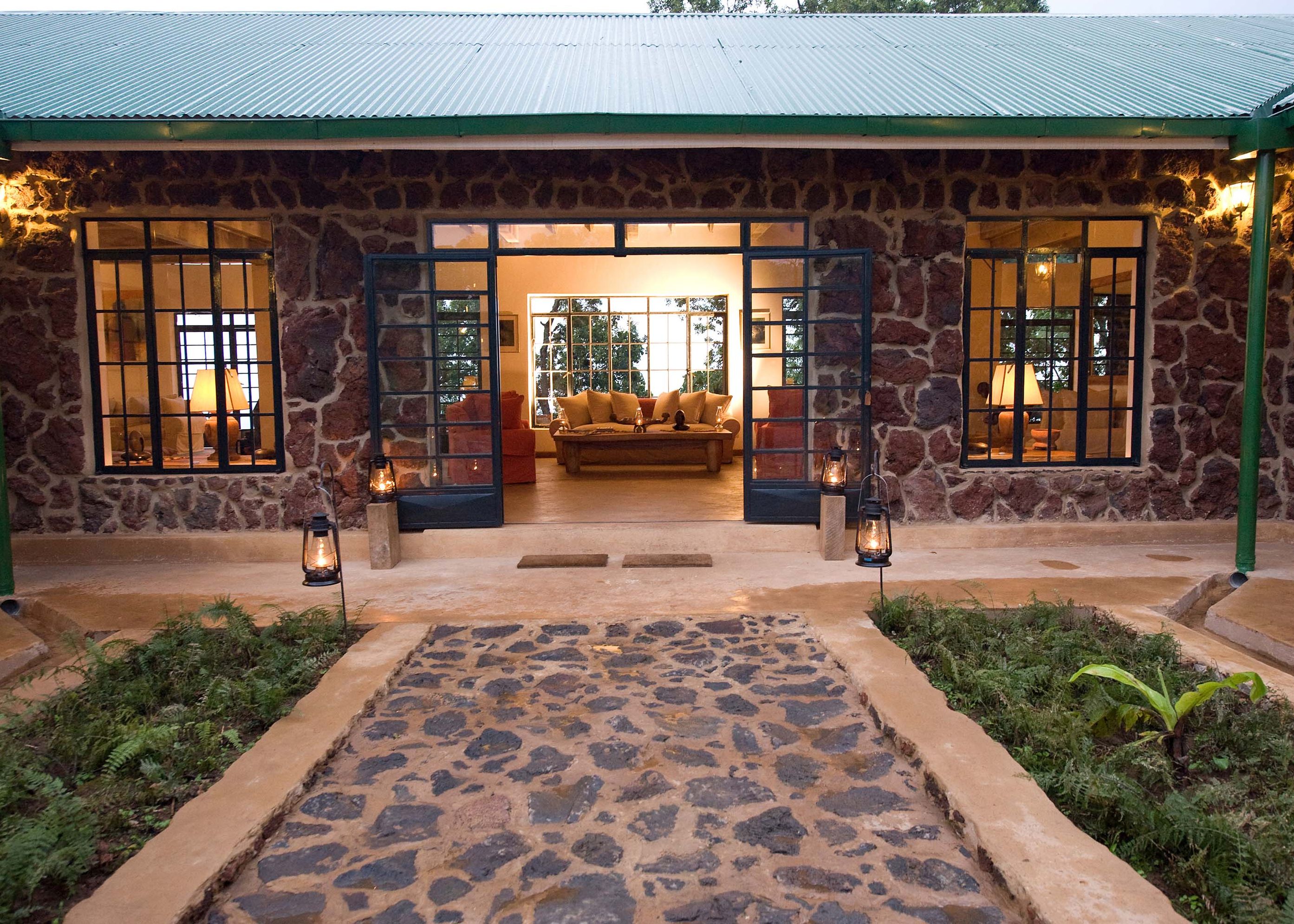
Currently there is one international airport at Entebbe, 45 minutes to an hour’s drive from Kampala (traffic dependent). A number of international airlines fly directly to/from Entebbe, among them Brussels Airlines, Egypt Air, Emirates, Ethiopian Airlines, Etihad, Kenya Airways, Qatar, KLM, South African Airlines, Fly Dubai, Rwanda Air and Turkish Airlines. Most major towns have an airstrip as do most National Parks and Game Reserves. There are regular scheduled flights between most airstrips, and there are reputable charter operations as well. Note Regarding Baggage Limits Weight limits on light aircraft flights within Uganda are 15kg + 1 small hand piece. All bags must be soft – no hard suitcases or wheeled bags permitted. No excess baggage is usually allowed on these flights.
With regards to clothing, you are going to be hot, cold and possibly wet! So we would suggest a variety of light clothing: shorts, light long pants, t-shirts, flip flops, hat, rain jacket, as well as study shoes (essential for tracking). Long sleeved shirts and a sweatshirt or fleece are needed for evenings. Women in rural towns may feel more comfortable wearing clothing that cover their knees and shoulders, but this is not mandatory. It gets quite hot by midday, but evenings are always pleasant. Lodges do not have a dress code and for the most part casual clothes are de rigueur.
Please note our recommendations for all on-foot activities in the parks (walking safaris, chimpanzee and gorilla tracks):
ï‚· Long-sleeved shirts and trousers (older clothes recommended as they can get dirty and torn from the thorns and jungle foliage). Avoid navy or black clothes as they attract tsetse flies
ï‚· Good comfortable sturdy hiking boots with good ankle support ï‚· Long socks to truck your trousers into (or gators)
ï‚· Rain jacket
ï‚· Gloves (old gardening gloves, just in case the tracking gets extreme through the thick foliage)
ï‚· Hat and sunglasses
ï‚· Binoculars
ï‚· Camera (but please note that using a flash is not permitted while photographing the gorillas)
ï‚· Waterproof rucksack (or plastic bags inside your rucksack)
ï‚· Insect repellent and sunscreen
The Uganda Shilling (UGX) is the local currency and it is available in useable denominations of 50, 100, 200, 500, 1,000, 5,000, 10,000, 20,000 and 50,000. It is best to bring American Dollars to exchange. There are numerous forex bureaux and banks in Kampala and the main towns. Credit cards are accepted in major hotels and restaurants, but generally it is best to carry cash (shillings) upcountry while on safari. Regarding credit cards, it is essential to note that VISA is most widely accepted, with MasterCard occasionally accepted. AMEX and others are not recommended as establishments usually don’t support them. US$ to UGX exchange rate indications are as follows:
For the 12 months between 01 Jan 2018 and 01 Jan 2019, the exchange rate fluctuated between:
US$ 1 = UGX 3,634 – 3,837
US$ Dollar bills smaller in denominations than US$100 may attract a less favourable rate of exchange and notes older than 2009 are not accepted by hotels, banks, etc.
GDP/PPP (2005 est.): US$46.06 billion; per capita US$1,700. Real growth rate: 9%. Inflation: 9.7%. Unemployment: n.a. Arable land: 22%. Agriculture: coffee, tea, cotton, tobacco, cassava (tapioca), potatoes, corn, millet, pulses, cut flowers, beef, goat meat, milk, poultry. Labour force: 13.17 million; agriculture 82%, industry 5%, services 13% (1999 est.). Industries: sugar, brewing, tobacco, cotton textiles; cement, steel production. Natural resources: copper, cobalt, hydropower, limestone, salt, arable land. Exports: US$768 million f.o.b. (2005 est.): coffee, fish and fish products, tea, cotton, flowers, horticultural products; gold. Imports: US$1.608 billion f.o.b. (2005 est.): capital equipment, vehicles, petroleum, medical supplies; cereals. Major trading partners: Kenya, The Netherlands, Belgium, France, Germany, Rwanda, U.S., UAE, South Africa, India, China, UK, Japan (2004). Member of the Commonwealth of Nations.
President : Yoweri Museveni (1986)
Prime Minister : Ruhakana Ruganda (2014)
Type of Government : Multi party democratic republic
Land area : 93,065 sq. mi (236,580 sq. km)
Population (2008) : 40,386,141 (2014)
Life Expectancy : 56 (2013)
Capital and largest city : Kampala
Yellow fever vaccinations are now compulsory for entry in Uganda – and are usually compulsory for returning to your country of origin. The Yellow Fever vaccination card also forms part of the requirements for your online visa application (see: Visas). We also highly recommend anti–malaria tablets, especially during the rainy season. Please visit your local travel clinic to determine what recommendations there are for vaccinations (examples are Hepatitis A&B, Meningitis, and Rabies). Prescription drugs can be bought affordably and with ease over the counter in Kampala. Personal travel and emergency evacuation insurance is strongly advised. http://www.who.int/countries/uga/en
About 500 B.C. Bantu-speaking peoples migrated to the area now called Uganda. By the 14th century, three kingdoms dominated, Buganda (meaning “state of the Gandas”), Bunyoro, and Ankole. Uganda was first explored by Europeans as well as Arab traders in 1844. An Anglo-German agreement of 1890 declared it to be in the British sphere of influence in Africa, and the Imperial British East Africa Company was chartered to develop the area. The company did not prosper financially, and in 1894 a British protectorate was proclaimed. Few Europeans permanently settled in Uganda, but it attracted many Indians, who became important players in Ugandan commerce.
Uganda became independent on Oct. 9, 1962. Sir Edward Mutesa, the king of Buganda (Mutesa II), was elected the first president, and Milton Obote the first prime minister, of the newly independent country. With the help of a young army officer, Col. Idi Amin, Prime Minister Obote seized control of the government from President Mutesa four years later. On Jan. 25, 1971, Colonel Amin deposed President Obote. Obote went into exile in Tanzania. Amin expelled Asian residents and launched a reign of terror against Ugandan opponents, torturing and killing tens of thousands. In 1976, he had himself proclaimed “President for Life.” In 1977, Amnesty International estimated that 300,000 may have died under his rule, including church leaders and recalcitrant cabinet ministers.
After Amin held military exercises on the Tanzanian border in 1978, angering Tanzania's president, Julius Nyerere, a combined force of Tanzanian troops and Ugandan exiles loyal to former president Obote invaded Uganda and chased Amin into exile in Saudi Arabia in 1979. After a series of interim administrations, President Obote led his People's Congress Party to victory in 1980 elections that opponents charged were rigged. On July 27, 1985, army troops staged a coup and took over the government. Obote fled into exile. The military regime installed Gen. Tito Okello as chief of state. The National Resistance Army (NRA), an anti-Obote group led by Yoweri Museveni, kept fighting after it had been excluded from the new regime. It seized Kampala on Jan. 29, 1986, and Museveni was declared president. Museveni has transformed the ruins of Idi Amin and Milton Obote's Uganda into an economic miracle, preaching a philosophy of selfsufficiency and anticorruption. Western countries have flocked to assist him in the country's transformation. Nevertheless, it does remain one of Africa's poorer countries. A ban on political parties was lifted in 1996, and the incumbent Museveni won 72% of the vote, reflecting his popularity due to the country's economic recovery.
Uganda has waged an enormously successful campaign against AIDS, dramatically reducing the rate of new infections through an intensive public health and education campaign.
Close ties with Rwanda (many Rwandan Tutsi exiles helped Museveni come to power) led to the cooperation of Uganda and Rwanda in the ousting of Zaire's Mobutu Sese Seko in 1997, and a year later, in efforts to unseat his successor, Laurent Kabila, whom both countries originally supported but from whom they grew estranged. But in 1999, Uganda and Rwanda quarrelled over strategy in the Democratic Republic of the Congo and began fighting each other. The two countries mended their differences in 2002. Uganda also signed a peace accord with the Congo in September, 2002 and finally withdrew its remaining troops from the country in May 2003.
In July 2005, parliament amended the constitution to eliminate term limits, thus allowing President Museveni more terms in office. In 2016, he was re-elected for his fifth term as President of the Country.
Uganda's 18-year-long battle against the brutal Lord's Resistance Army (LRA), an extremist rebel group based in Sudan, showed signs of abating in August 2006, when the rebels agreed to declare a truce. Between 8,000 and 10,000 children have been abducted by the LRA to form the army of “prophet” Joseph Kony, whose aim was to take over Uganda and run it according to his vision of Christianity. The boys are turned into soldiers and the girls into sex slaves. Up to 1.5 million people in Northern Uganda have been displaced because of the fighting and the fear that their children will be abducted. Kony and four other LRA leaders are wanted for war crimes by the International Criminal Court.
English is the official language, but Ugandans speak many local languages and dialects, Ganda or Luganda, other NigerCongo languages and Nilo-Saharan languages. Swahili is also widely spoken and understood.
Roman Catholic: 41% Anglican: 40% Ethno religionists or indigenous beliefs: 4% Muslim: 5% Other: 10%
In all instances tipping should be treated as a personal matter; and a gratuity only given if you feel the service warrants it. If you do wish to tip, it is important to recognize service people such as airport transfer drivers, restaurant and lodge personnel, and your local safari guides. If providing a tip for a group of people, please be sure to provide this in full view of others. If you are ever unsure, the Lodge/Hotel management or your Overland Guide will be able to direct you.
The following should serve as a useful guideline:
“Group / party” refers to group / party of travellers within one booking ie travelling together If more than 5 in one group / party, then the amounts below should be increased slightly
Driver/Guides (Transfers) : US$ 5 – US$ 10 per group / party per transfer
Driver/Guides (Overland) : US$ 10 – US$ 30+ per group / party per day
Guides (Other) (Game Drives / Boats / Other Activities) : US$ 5 – US$ 20+ per group / party per day
Porter (Airport & Lodge/Hotel) : US$ 5 per group / party
Staff (City Hotel & Restaurant) : 10% of total bill (some city hotels & restaurants automatically include this)
Staff (Lodge/Hotel) : US$ 10 – US$ 30+ per group / party per day
Tracking (Gorillas) (Guides, Trackers / Security) : US$ 20 – US$ 30+ per track per group / party This may be given to the head guide in view of the rest of the staff for distribution amongst the staff
Tracking (Chimpanzees) (Guides, Trackers / Security) : US$ 10 – US$ 20 per track per group / party This may be given to the head guide in view of the rest of the staff for distribution amongst the staff
Porters (Gorillas) : US$ 15 (set fee) + tip of approximately US$ 5 – US$ 10+
Tips may be given in Uganda Shillings or US Dollars.
The lodges will usually have a staff tip box from which tips are distributed equitably amongst the entire staff.
Visas are necessary for most tourists and may be obtained prior to travel.
With effect from 01 July 2016, the Government of Uganda has introduced the online visa application system. Guests intending to visit Uganda for tourism-purposes are required to apply and obtain a visa online. The decision taken on the application will be sent electronically via the email address provided by the applicant. This entire process should take +/-3 days. When/if approved, an approval letter will be sent as an attachment to this email. The applicant should print out this approval letter and present it at the port of entry (together with documentation and payment as mentioned below).
With effect from 22 July 2016, all those entering Uganda on a Single Entry Tourist Visa will pay $50 instead of $100. The East Africa Tourist Visa (Uganda | Rwanda | Kenya) remains at $100.
Please follow the steps below in order to apply for a visa online:
ï‚· Go to the website: https://visas.immigration.go.ug/
ï‚· Complete the online form
ï‚· Attach the supporting documents (for list of documents, view website: https://visas.immigration.go.ug/#/help/visa or see list below) and submit
Ordinary / Single Entry Tourist Visa documents required:
ï‚·Passport copy (Bio-data page)
 Recent Passport size photograph
 Vaccination Certificate (Yellow Fever)
East Africa Tourist Visa documents required (includes entry for Uganda | Rwanda | Kenya):
 Passport copy (Bio-data page)
 Recent Passport size photograph
 Travel Itinerary
 Vaccination Certificate (Yellow Fever)
 Return Ticket
ï‚· Await official approval notification/letter via email
ï‚· Print the official approval notification/letter and present it on arrival in Uganda, together with:
Your fee in cash ($50 for Ordinary/Single Entry Visas and $100 for East Africa Tourist Visas) (please remember to have the correct amount in cash on arrival, in bills that are newer than 2006).
Valid Passport
Original Vaccination Certificate (Yellow Fever)
Please also visit: http://www.embassy-worldwide.com/country/uganda/ to get details on an embassy near you for further queries.
The climate is good in Uganda all year round and the bulk of the country is tropical with daytime temperatures generally hovering between 24 and 28°C. It can cool down considerably at night (to about 16 to 18°C), enough to warrant bringing a sweatshirt, fleece or wrap. The rains generally come twice a year, in October/November (short rains) and late March to end of May.
Kampala has a slightly milder climate; and the parks in the south tend to be a bit warmer during the day, and cooler at night. The areas at high altitude, such a Bwindi, get considerably colder as temperatures tend to drop about 6°C for every 1000m one climbs. The parks further north, such as Murchison Falls, and Kidepo Valley are usually warmer with daytime temperatures at about 32°C. The hottest months are usually January and February when the average daytime range is 24- 33°C with peaks of up to 40°C in the far north.
The south has two wet seasons: from mid- September to November and March to May. The dry season from December to February means only that it rains less, but the gorilla parks still remain fairly wet during these months. The second dry season from June and July is considerably drier. Still, with 1000 to 2000mm (39.4-78.7in) of rain every year, it can rain at almost any time. The north, including Murchison Falls and Kidepo Valley, has one continuous wet season from March to November and a more obvious dry season from December to February.
Generally, when raining, it can make travel more difficult since dirt roads and forest trails used for gorilla tracking can become more challenging to navigate. However, rainy season is no real reason to postpone travel as it generally rains for while, leaving the rest of the day clear and sunny. It is essential to remember that weather patterns worldwide are no longer predictable and this information is a guideline only.
As yet mostly untouched by mass tourism, Uganda's parks and reserves are ideal retreats for the discerning eco-tourist. The experience is different to that in some of the parks in South Africa, Kenya and Tanzania. Here there are no tarmac roads through the parks, no mass convergence of zebra-camouflaged safari trucks and no animals turning up by appointment! The experience takes you back to basics where patience and good game tracking skills are key.
Tourism has attracted massive investment and interest, aiding the redevelopment of infrastructure in the National Parks with increased control and management. Uganda’s National Parks encompass and conserve all of the ten major habitat types occurring in Uganda.
Gorilla tracking is one of Uganda’s main wildlife highlights. We have a separate document, detailing all you would need to know regarding gorilla tracking in Bwindi, Uganda.



Buniga Forest Walk and the Batwa Community of Sanuriro
Community Tour
* Age limits apply

Massage
Private dinners











